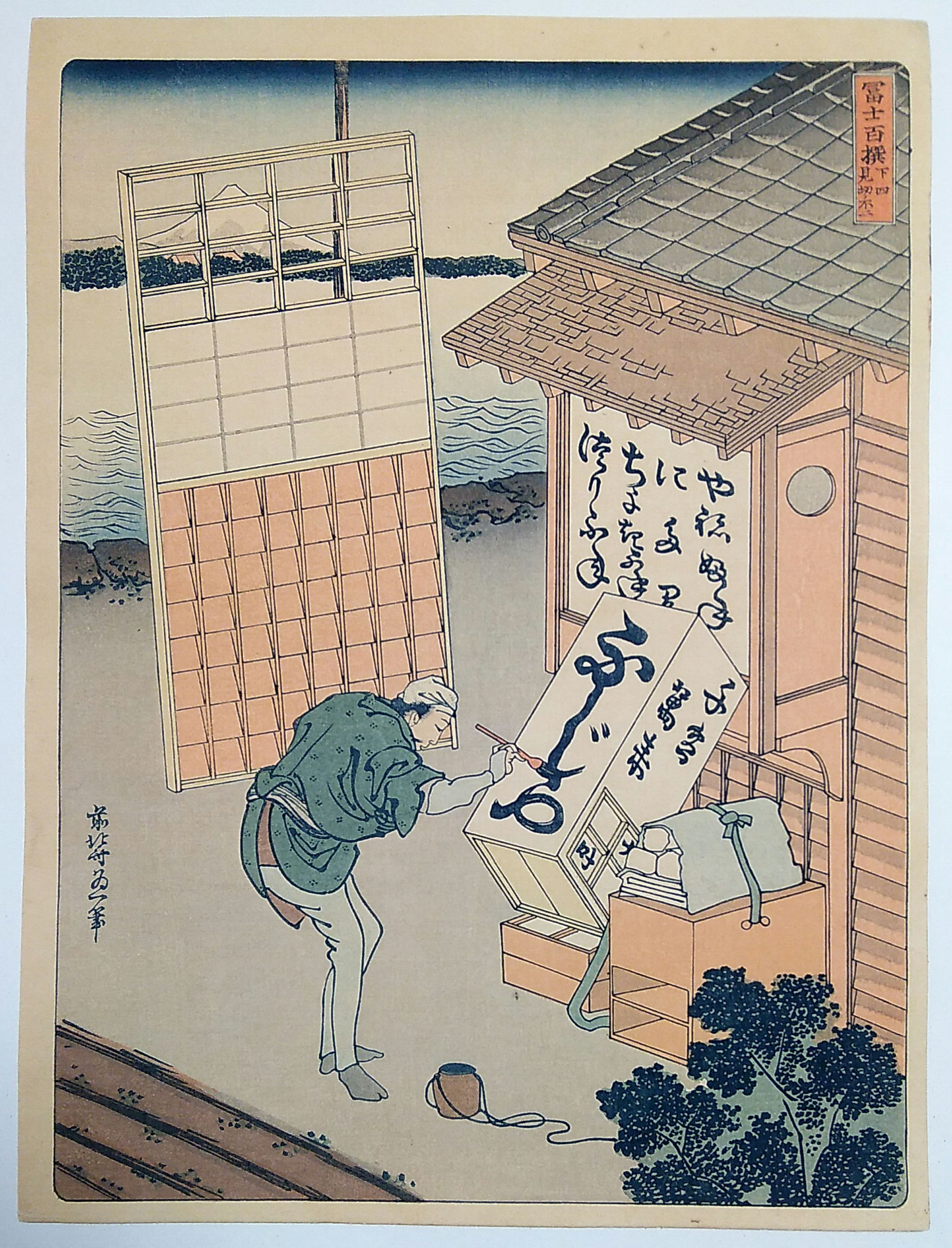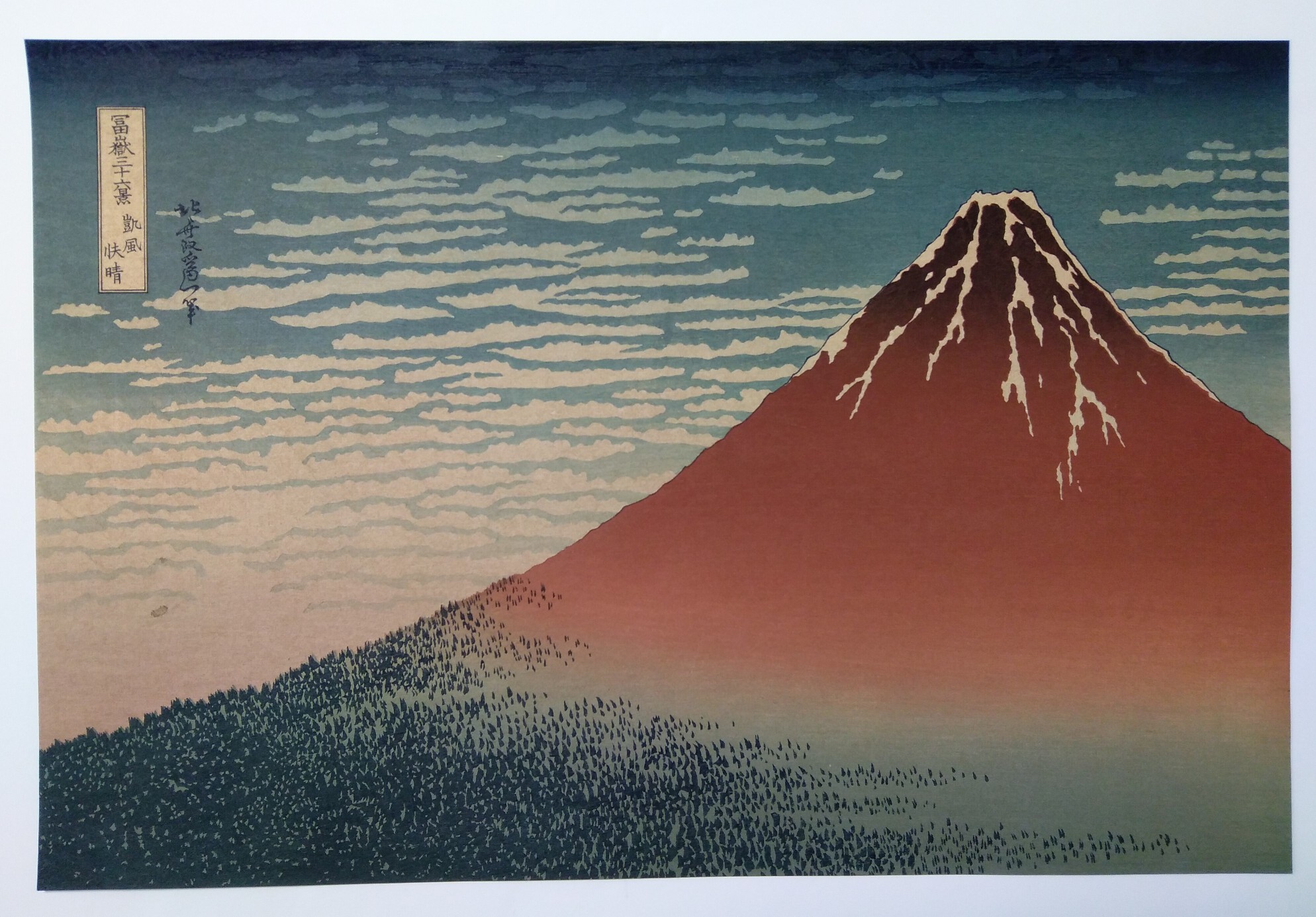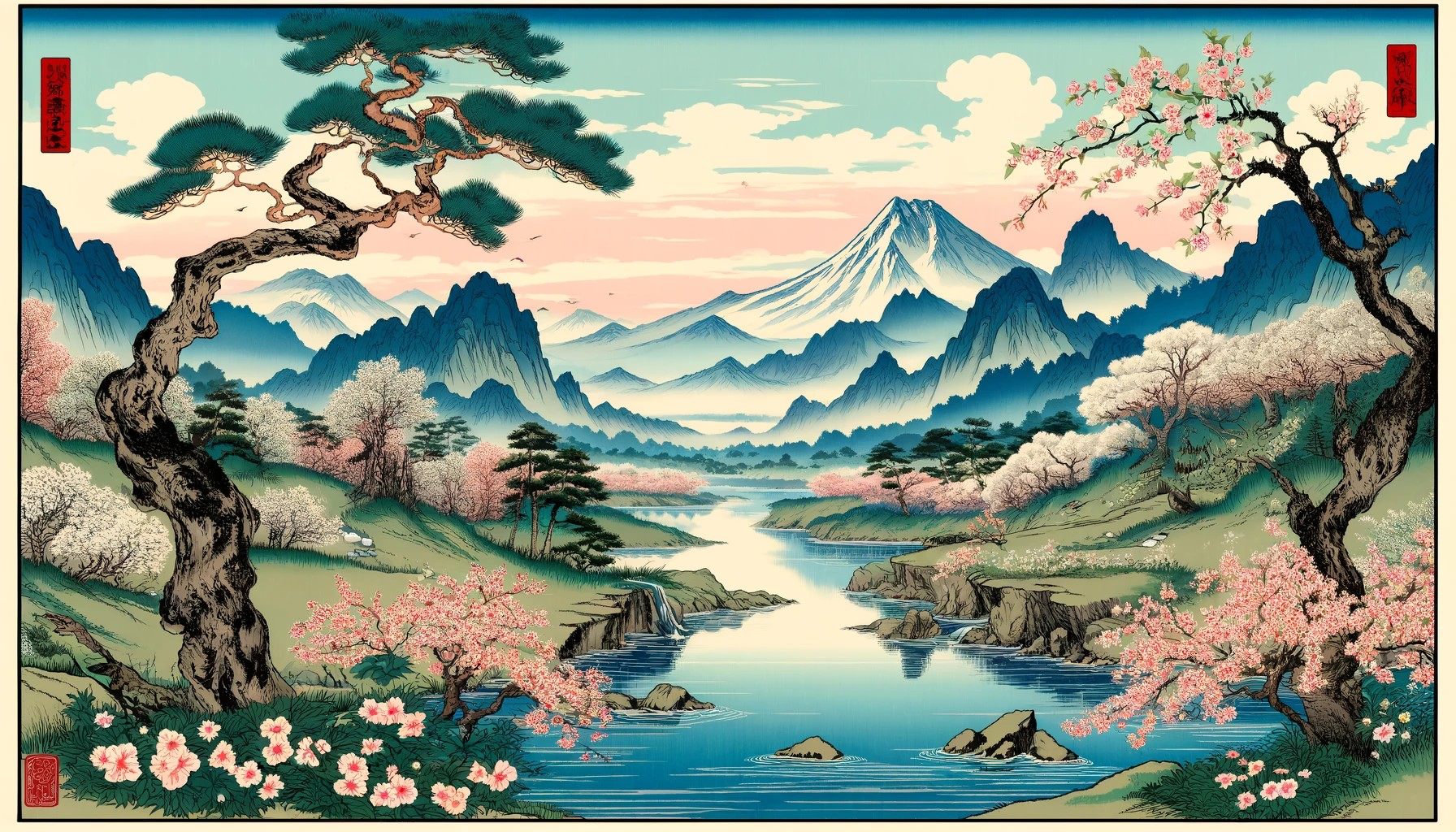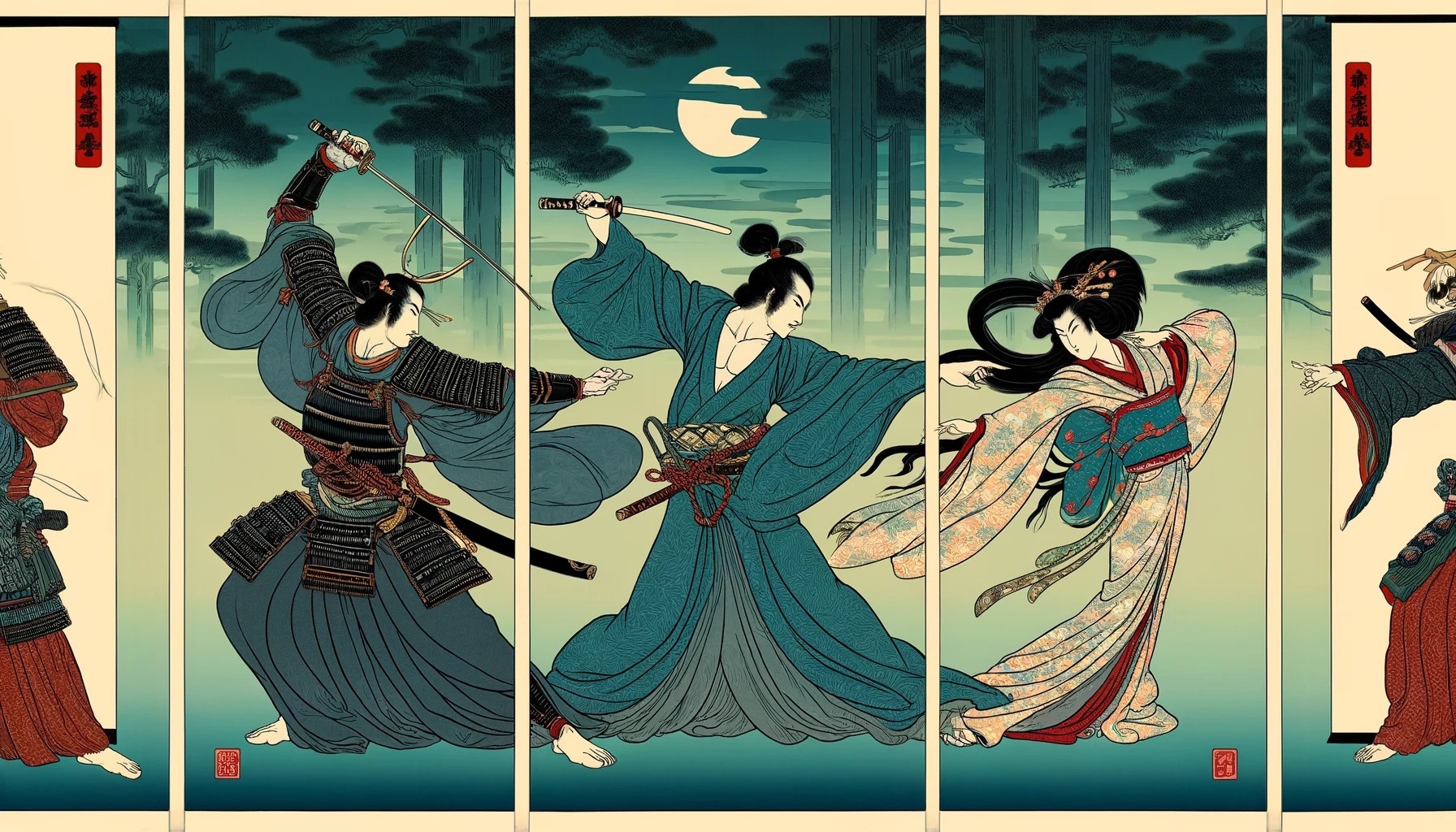Katsushika Hokusai (1760 ~ 1849 )
Hokusai Katsushika, born as Tokitarō Kawamura (富岡秀太郎), is considered one of the greatest Japanese
artists and a prominent figure in ukiyo-e.
Born in the Honjo district of Edo (today's Tōkyō), he was adopted by mirror maker Ise Nakajima and began learning engraving at a young age.
His artistic career formally began around 1779 when he joined the workshop of ukiyo-e master Katsukawa Shunsho (勝川春章, 1726-1792).
Hokusai changed various names throughout his life, including "Tetsuzō Nakajima" and "Sori," before settling on "Hokusai."
Following the death of his first master and various disagreements, he became an independent artist around 1798. The following decades were marked
by both professional success and personal struggles, including the death of his second wife.
His most famous work is the series Thirty-Six Views of Mount Fuji (c. 1831-1833), which includes the iconic print The Great Wave off Kanagawa. This series and
others like One Hundred Views of Mount Fuji and A Tour of the Waterfalls of the Provinces established him as a leading landscape artist, revolutionizing the genre
with bold compositions and innovative techniques.
Hokusai is also known for his Manga (sketchbooks), published starting in 1814, capturing Edo-period life with a spontaneous, sketch-like quality. Throughout his career,
he created over 30,000 works, using more than 50 artist names. His influence extended globally, inspiring movements such as Impressionism and Art Nouveau in Europe.
Despite his death in 1849, Hokusai's legacy endures through his prints, paintings, and illustrations, which remain pivotal in art history worldwide.

A limited view of Mount Fuji
One houndred view of mount Fuji

Red Fuji
Thirty six views of Mount Fuji
Sold out


